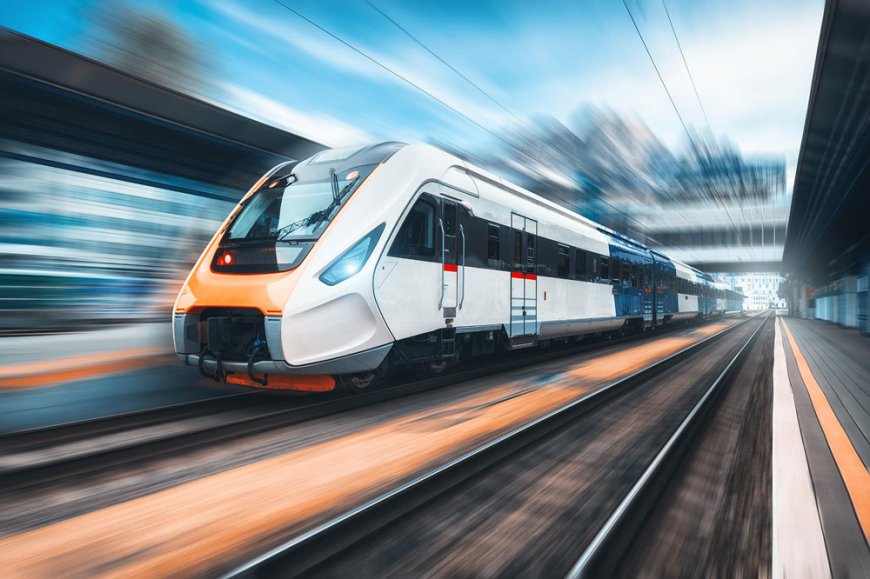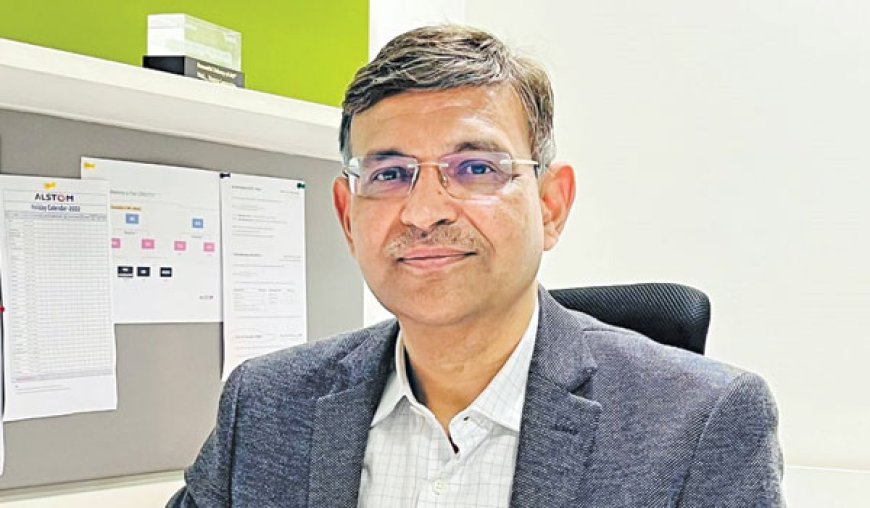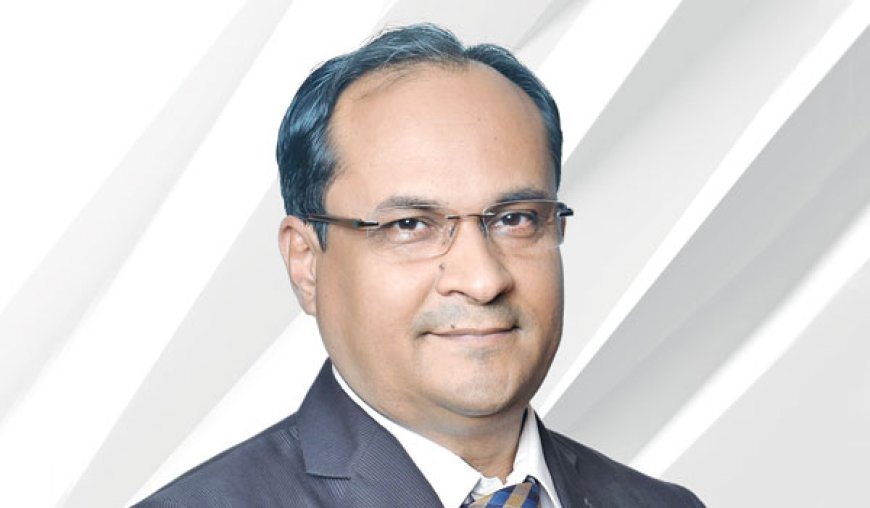On Modernisation Track

With a slew of expansion and modernization projects in the railways and metro rail sector, India is aiming to transform the sector with modern amenities, sustainable infrastructure and a faster transport system across the country. Construction Times presents an overview of the new developments going on in the sector and how far this will benefit the people.
The railway infrastructure in India is on a modernization spree with a slew of developments and expansions are happening in railway tracks and bridges, coaches and wagons, railway stations, electrification and digitalization. The government’s renewed focus on the transformation of railways into a modern sustainable mode of transportation in India will see an impetus to India’s journey towards the next level in the global economic power league.
Developments gaining momentum
According to a study by Ministry of Railways, more than 8 billion people travel by train each year, which is projected to hit 80 billion by 2030. During April 2023-February 2024, freight loading of 1434.01 MT was achieved by Indian Railways against last year’s loading of 1367.5 MT, an improvement of approximate 66.51 MT over last year’s loading for the same period. India's rail freight sector is undergoing a transformative shift, prioritising speed and efficiency with the crucial role of dedicated freight corridors. India aims a rail freight traffic of 3.3 billion tonnes by 2030. The total budget allocation for 2024-25 is Rs 2.52 lakh-crore which is significant and will help in increasing capacity, improving infrastructure and passenger experience.
Railway station development
on August 6, 2023, Prime Minister Narendra Modi inaugurated a rail station development programme called ‘Amrit Bharat Railway Stations’. The entire project covers redevelopment works at 1,309 stations across the country with the first 508 train stations across 27 states and union territories at an investment of Rs 24,470 crores (USD 3 billion).
These 508 stations are spread across 27 states and union territories, including 55 each in Uttar Pradesh and Rajasthan, 49 in Bihar, 44 in Maharashtra, 37 in West Bengal, 34 in Madhya Pradesh, 32 in Assam, 25 in Odisha, 22 in Punjab, 21 each in Gujarat and Telangana, 20 in Jharkhand, 18 each in Andhra Pradesh and Tamil Nadu, 15 in Haryana, 13 in Karnataka among others, according to a PIB report.
According to the master plans, these stations will be redeveloped as ‘City Centres’, which will better integrate cities’ landscape and public transport system creating an urban approach centered around the railway station.
The redevelopment will provide modern passenger amenities along with ensuring well-designed traffic circulation, inter-modal integration and signage for the guidance of passengers. The design of the station buildings will be inspired by local culture, heritage and architecture.
Track expansion and modernisation
In order to effectively handle the growing needs, The Railways will invest at least Rs 7 trillion over the next decade to lay 50,000 km of new train tracks to modernize its network and boost train speeds. Railways is keen on improving connectivity with modern tracks that can handle the new high-speed trains such as Vande Bharat. This development initiative will be a part of the Vision 2047 document for the Railways, under which it expects to add 100,000 km of modern railway tracks.
According to Union Railway Minister Ashwini Vaishnaw, 40,000 km of rail tracks will be laid to enhance the network capacity to a point that the problem of the ticket wait list will be over by around 2030-31. These corridors of about 40,000 km of new tracks will be laid in the next six to eight years. According to the minister, Railways added 5,200 km of new tracks last year and is aiming to add 5,500 km this year.
DFCs to propel freight movements
The establishment of Dedicated Freight Corridors (DFCs), is expected to improve India’s logistics infrastructure in a big way by lower logistics costs through the use of higher axle load trains, double-stack container trains, and enhanced connectivity between the northern hinterland with ports on the eastern and western coasts. As of April 2024, 96.1 per cent of the DFC network has been commissioned (2,743 RKM has been commissioned out of the 2,843 RKM), according to the Dedicated Freight Corridor Corporation of India (DFCCI).
On top of the world
The Indian Railways has taken its network to the hard to reach Himalayan mountainous terrain through unique bridge and tunnel projects. The longest rail tunnel of the country on the Udhampur-Srinagar-Baramulla Rail Link (USBRL) was opened by Prime Minister Narendra Modi in this February. This longest tunnel, which is 12.77-km long and known as T-5 falls between the Khari-Sumber section. This important link will facilitate the much-needed rail connectivity in the hilly terrains of the region.
The Prime Minister also inaugurated the world’s highest railway bridge over Chenab. Located 359 m above the Chenab's riverbed, the 1.3 km-long rail bridge is 35 m higher than the Eiffel Tower. It is a part of the 111-km Katra–Banihal stretch, which forms a part of the Udhampur-Srinagar-Baramulla Railway Line (USBRL) Project. The railway bridge will connect Bakkal and Kauri villages in the Reasi district of southern Jammu. There are more such connectivity projects in the pipeline that will improve the rail connectivity in the hilly terrains of the country.
High-speed rail corridor
With a vision of providing a safe, reliable and sustainable high-speed rail services with technological excellence for improved quality of life and development of the nation, the Government of India formed the National High-Speed Rail Corporation Ltd (NHSRCL) in February 2016. The main objective of NHSRCL is to finance, construct, maintain and manage the High-Speed Rail Corridor in India.
The High-Speed Rail (HSR) project apart from being a technological marvel, would afford many quantifiable benefits like saving in travel time, vehicle operation cost, reduction in pollution, job creation, reduction in accidents/ enhanced safety, imported fuel substitution, and reduction in pollutants. The project would also boost the infrastructure and add to the growth of economy.
The Mumbai-Ahmedabad bullet train project has provided a major boost to the country’s high-speed rail connectivity initiatives. The high-speed rail corridor will pass through Thane Creek in Mumbai. Since this area is a protected sanctuary for flamingo and nearby mangroves, rail tracks will be made undersea through a tunnel, thus ensuring no disturbance to existing ecosystem. This tunnel will be longest rail transport and first undersea tunnel of India. Tunnel will be a single tube with 13.2 m diameter to be executed by both NATM and TBM methods in different sections.
Once operational, the 508 km stretch between Mumbai and Ahmedabad will be covered in two hours and seven minutes by bullet train with a maximum operational speed of 320 km per hr, according to NHSRCL.
Metro rail: The sustainable urban connectivity
India has leapfrogged in a very short period to become the third-largest metro rail system in the world with a total operational length of over 900 km. There are currently 22 operational Metro systems in India. While 623 km metro network is under construction, 265 km projects have approved and a proposed 1112 km in the pipeline. This indicates the rapid growth of India’s metro rail system, which is poised to grow further at a greater pace.
Industry speaks

Anil Saini, Managing Director, Rolling Stock and Components (RSC), Alstom India says: “With growing population and rapid urbanization, the demand for public transport that is smart and sustainable is expected to increase exponentially. In terms of the future several technologies such as AI, IoT, Cloud Computing, next generation telecommunication and cyber security will play a stronger role in rail mobility architecture. As for the train itself, automatic and autonomous are a reality today in many cities and even suburban areas around the world. Europe’s most heavily used regional line in Paris, with 1.4 million daily journeys, is the first automated suburban train in the world (built by Alstom). Driverless technology improves the efficiency, safety, and overall performance of rail transportation systems. Equipped with digital tools, cutting-edge sensors, powerful software, and deep experience in driverless transport, Alstom is at the forefront of the development of autonomous systems.”

Ganesh Kothawade, President, Distribution Solutions Division, Electrification Business, ABB India, elaborates: “The Indian rail infrastructure segment is currently undergoing an upgrade in both the freight movement and passenger movement space due to ever increasing traffic. The system is being equipped with modern, comfortable, and high-tech technology. ABB India has contributed towards metro and rail projects in more than 10 cities. Our key drivers in the business portfolio are the passenger and freight traffic segments. ABB India is contributing to the modernization of many railway stations, dedicated freight corridors, augmentation of high-speed trains, Gati Shakti cargo terminal, and Vande Bharat trains. Our company’s technology is being widely accepted by most market segments due to the high quality and reliable products we have to offer.”

Prithish Chowdhary, Deputy CEO, PRS, Titagarh Rail Systems Limited, adds:







